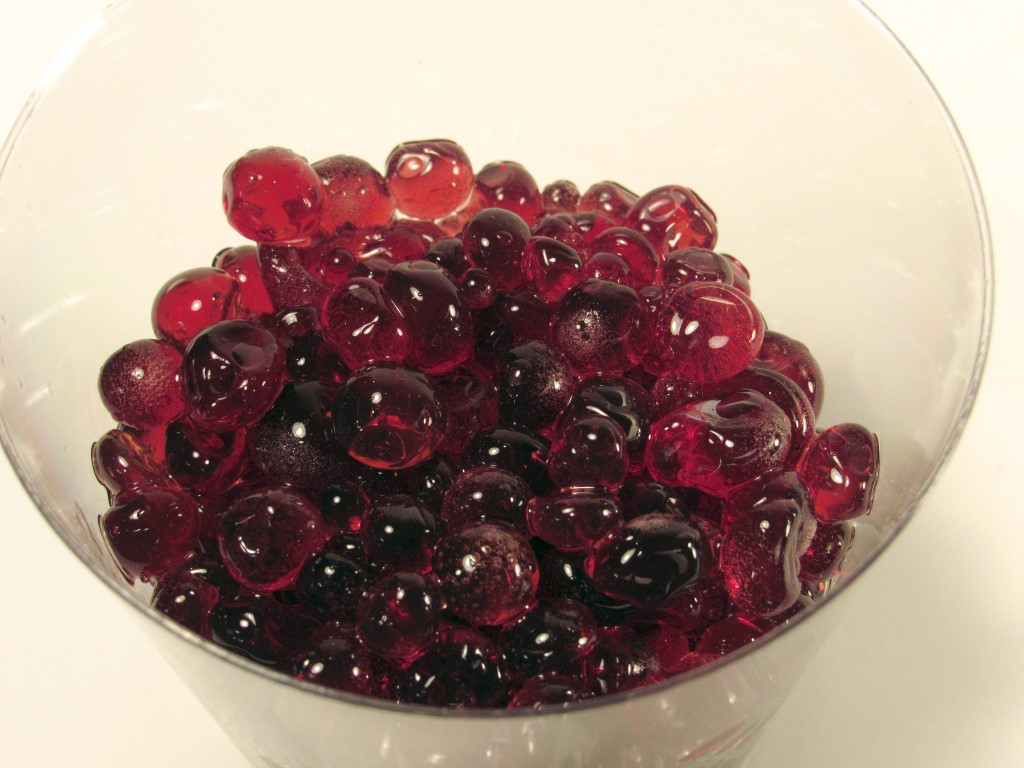Amaze your friends with a little science trick! Make some grape juice dots and put half of them into a glass of water mixed with a teaspoon of baking soda. Slip the other half into some lemonade or lemon-lime soda. After a little while the baking soda dots will turn deep blue, and the lemony dots will become reddish. That’s because of a chemical reaction between a substance found in grapes that changes color when it comes into contact with acid (from lemon juice) or bases (like baking soda). Try switching some of the dots to the opposite glass to see how long it takes for them to reverse colors. Science!
[Warning] Chemical Enemies
Although you can experiment with any kind of flavoring or ingredient in modern cuisine, avoid using pineapple and gelatin together. The pineapple has certain chemical enzymes that will break down the molecular bonds holding the gelatin together and turn it into runny goop. If you’re curious, try it yourself: take a bowl of gelatin, add some pineapple, and watch it dissolve. Chemistry in action!
















